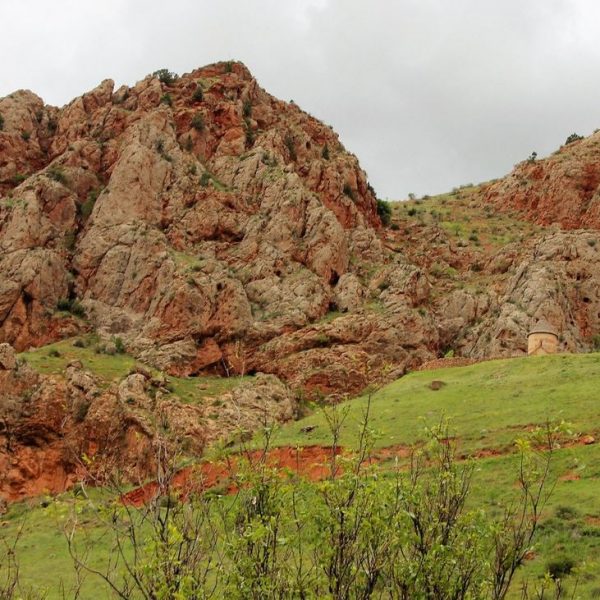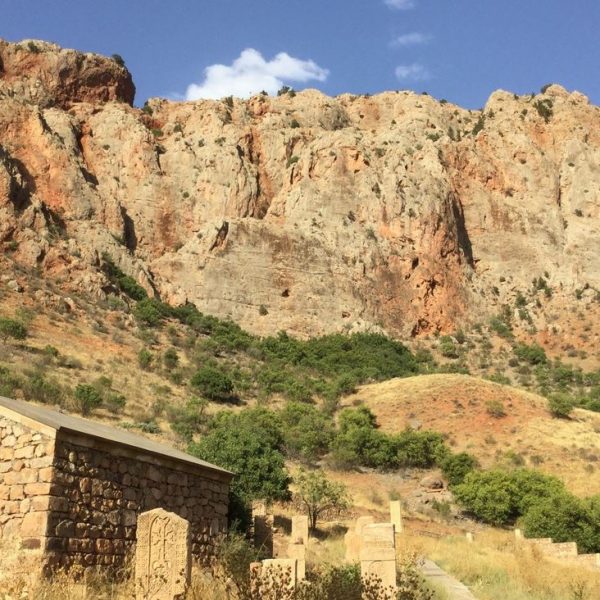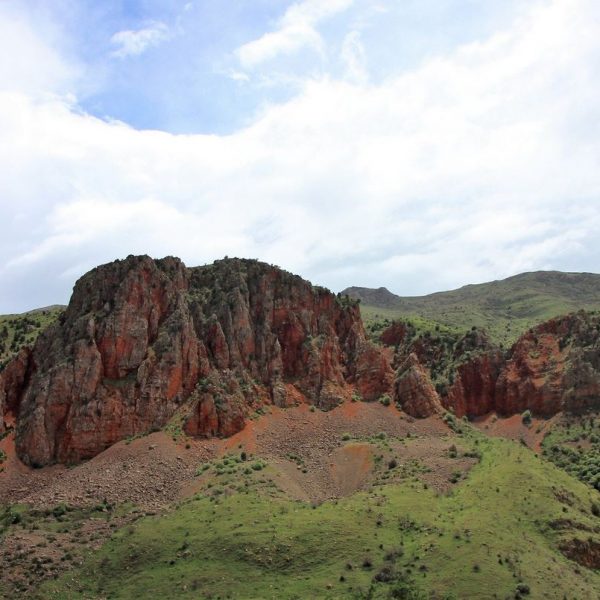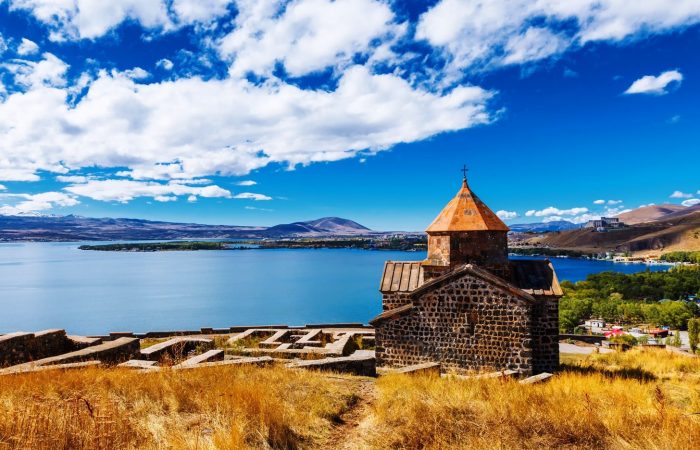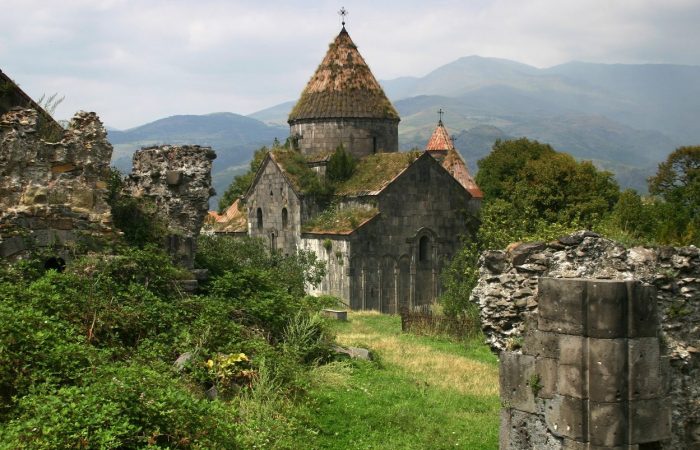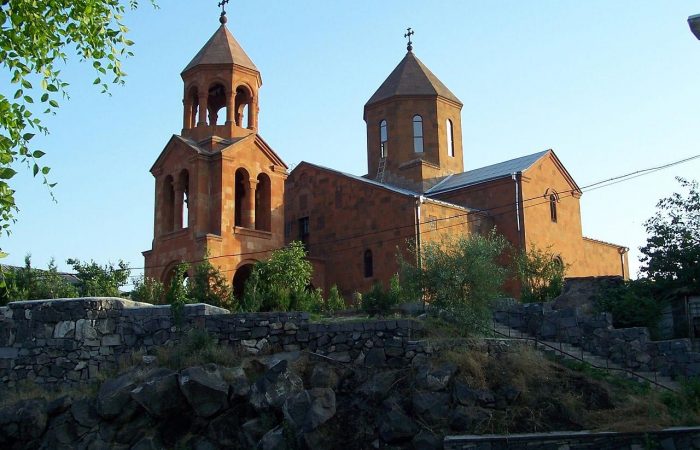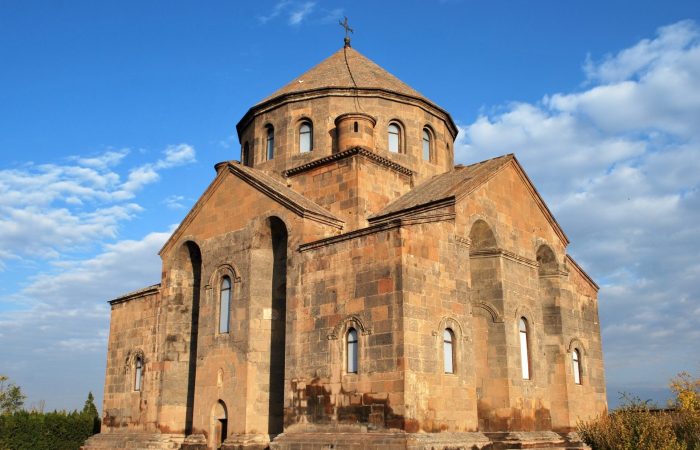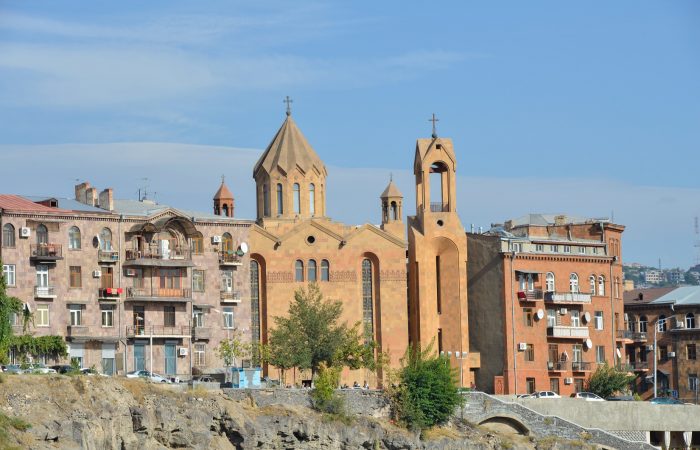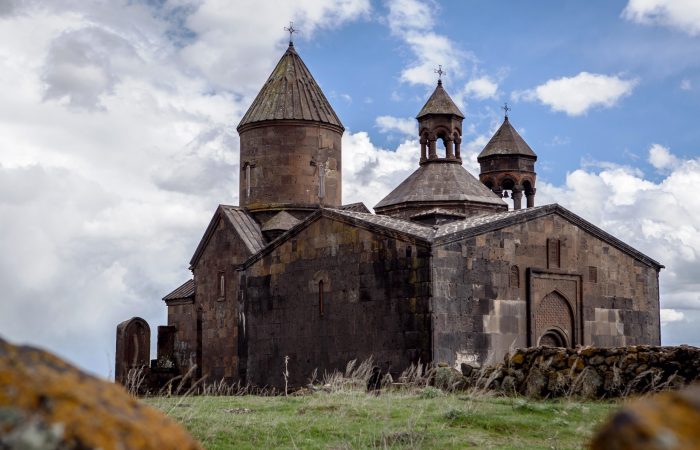Noravank Gorge: General
The Gorge of Noravank is popular with its caves, and splendid flora and fauna. The gorge is located in Vayots Dzor District. There is an interesting story regarding the name of Vayots Dzor – it is said that once there was the city of Moz, which was covered with lava after the local volcano erupted. The eruption was caused by an earthquake. The sorrowful cries “vai, vai” of those people who survived the natural calamity resulted in the naming. The naming suggests that Vayots Dzor means the “Sorrowful Canyon.”
Among the things visitors will see when visiting the gorge are the Magel Cave, Bird Cave and so on.
Noravank Gorge: Magel Cave
Being the second largest cave in Armenia after the Bear Cave, Magel Cave is 1.7 km deep. The cave is believed to be inhabited in the Chalcolithic Period (Copper Age). Also, several findings dating to the 14th century were discovered. The cave has a remote location, which made it a good enough to place to hide during attacks and invasions. The entrance is so narrow that barely one person can crawl into it. As you go deeper, the passageway might get narrower or wider reaching 10-15 meters width.
Inside visitors will come across stalactites and stalagmites. The number of those speleothems is not large, however, as most of them have been destroyed by vandals or broken by kids playing in the caves. If you would love to see stunning stalactites, stalagmites, helictites, columns, flowstone, bacon, draperies and rimstone dams, then make sure you visit Mozrov Cave, which can be reached via Arpi Village.
Magel Cave is home to numerous bats, which are vital for Armenia’s eco-system. One thing to consider is – don’t try to explore the cave on your own. It’s yet not fully mapped, so to avoid various “bad lucks” a guide is recommended.
Noravank Gorge: Bird Cave
This cave is easier to explore than the Magel Cave. It combines a number of caves and can be accessed at the entrance of the gorge. Excavations conducted there have disclosed evidence of wine production there. It dates to 4200-3800 BC and only this is enough to conclude that the site is one of the earliest sites in the world, where wine has been fermented.
Again, a skilled guide is recommended because of the damage humans have caused to the cave.
Noravank Gorge: Birds
The variety of the gorge’s canyon is absolutely breathtaking. Among the residents are short toed eagles, golden eagles, bearded vultures, Egyptian vultures (these vultures are also noted in Khosrov Forest State Reserve), eagle owls, Peregrine falcons, semi-collared flycatchers (these birds can be seen in Kirants-Samson Gorge as well), European rollers and so on.
Notably, Noravank is an Important Bird Area (IBA). In case you don’t know, these are sites, which provide essential habitat for one or more species of a bird.
Noravank Gorge: Flora
Even a look is enough to get assured of the fact that the gorge’s flora is stunning. The gorge is home to not only rare plants but also to endemic plants and wild species of cultivated plants. Among them are the ancestors of Cultivated Pear (Pyrus takhtajanii and Pyrus tedvedevii), Walnut (Juglans regia), Wild Pistachio (Pistacia mutica), Wild Grape (Vitis sylvestris), Wild Cherries (Cerasus mahaleb and Cerasus incana), Elaeagnus (Elaeagnus angustifolia), Wild Lentil (Lens orientalis), Vetch (vicia), Onion (Allium) and so on. The variety of Cherry Plum (Prunus divaricata) and Almond Tree (Amygdalus fenzliana) is especially impressive.
On the high slopes of the gorge the following species can be seen – Campanula coriacea, Campanula karakuschensis, Dianthus orientalis, Scrophularia rupestris and so on. The latter is perfect to treat kidney stones. The gorge is also home to Bryonia Alba, which is widely used to treat back pain, neck pain, dry cough, overall weakness and headaches. Note that in 1900s the root of this plant was prescribed to patients suffering from bronchitis and pneumonia (presently, treating these two diseases with this plant is not recommended, though). Hackberries (Celtis Caucasica and Celtis glabrata) are also common in the gorge. It should be mentioned that in the ancient times these trees were considered sacred. Various sacred items were being made from the black wood of the Celtis. They were believed to do away with ghosts.
So never underestimate the power and excellence of this gorge, just make sure you have a professional guide with you who will show you to the gorge and reveal its entire beauty to you.

